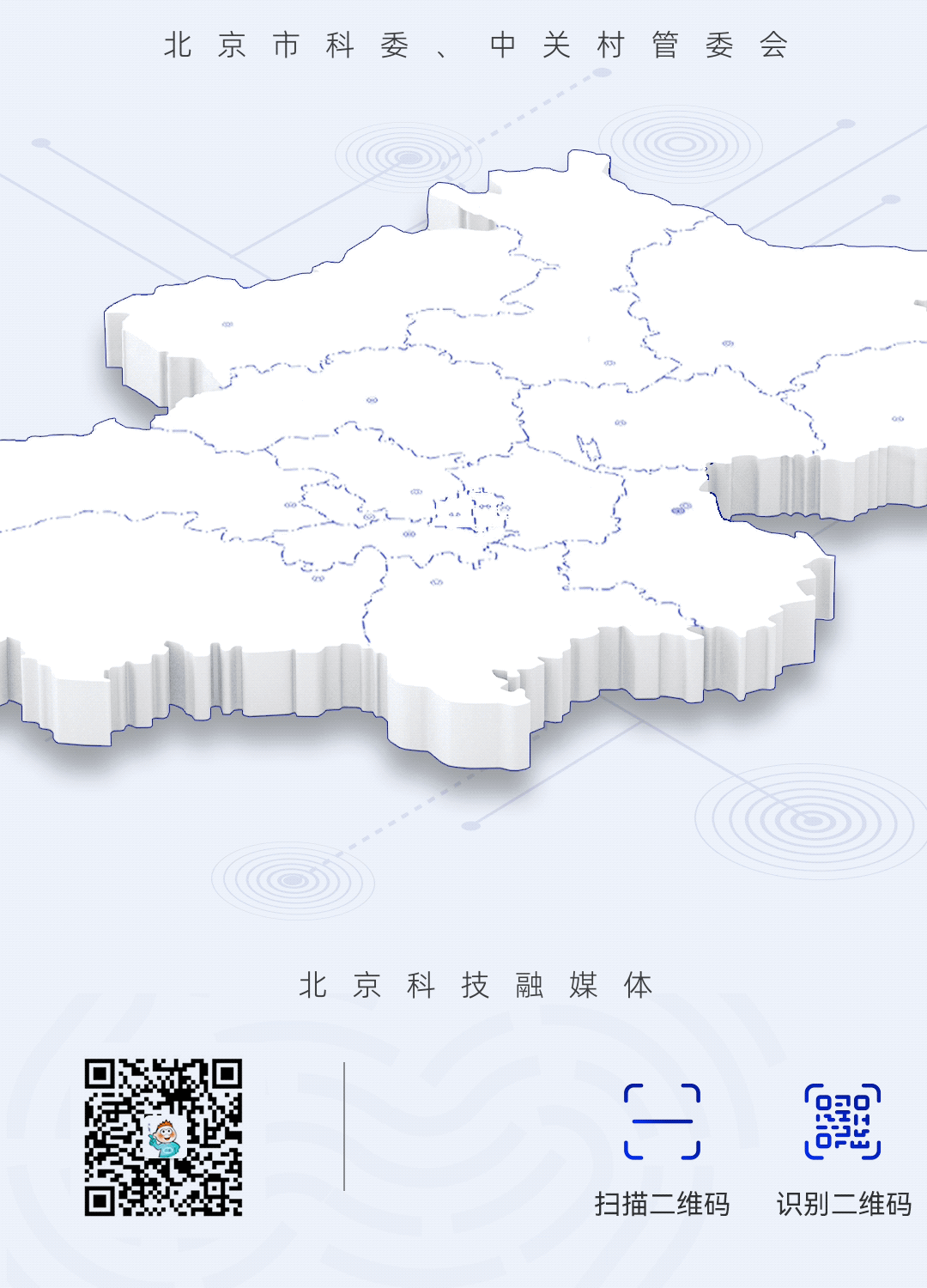
Have you ever wondered how micro-robots smaller than a coin can move as flexibly as Transformers? The answer lies in their “heart”—the actuator. Recently, Professor Zhang Yihui’s research group from Tsinghua University’s School of Aerospace Engineering and the National Key Laboratory of Flexible Electronics Technology has developed the world’s smallest and lightest micro wireless amphibious robot using a “building block” design approach for actuators.
In the era of AI, high-speed storage of big data is crucial. The team led by Zhou Peng and Liu Chunsen at Fudan University’s National Key Laboratory of Integrated Chips and Systems has developed the “Dawn (PoX)” picosecond flash memory device based on innovative theoretical foundations, achieving a write speed equivalent to 2.5 billion operations per second, surpassing the world’s fastest volatile memory SRAM technology at the same technology node.
Based on the weekly technology memory formed by the daily rankings of the International Science and Technology Innovation Center’s network service platform, we present the “Weekly Review of Cutting-Edge Technology” column. Today, we bring you the 139th issue.
1
“Nature Machine Intelligence” | The Birth of the Smallest and Lightest Wireless Amphibious Robot, Challenging the Limits of Transformation
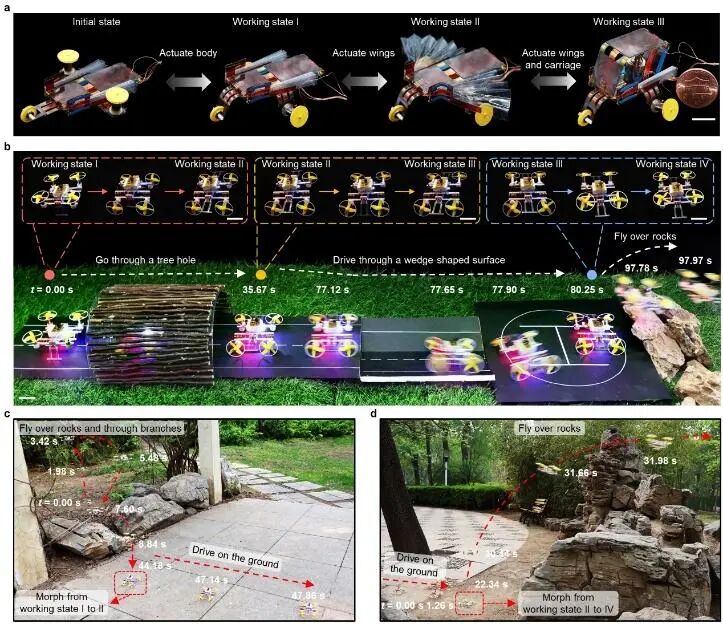
A reconfigurable system based on this actuator. (a) is a multifunctional micro wheeled robot; (b) is a micro amphibious robot; (c)-(d) are outdoor scenes showcasing the micro amphibious robot. (Scale: (a) 10mm, (b) 30mm)
Have you ever wondered how micro-robots smaller than a coin can move as flexibly as Transformers? The answer lies in their “heart”—the actuator. Recently, Professor Zhang Yihui’s research group from Tsinghua University’s School of Aerospace Engineering and the National Key Laboratory of Flexible Electronics Technology proposed a design concept for a thin-film shape memory actuator with continuous shape change and configuration locking capabilities. Compared to other actuators with deformation and locking capabilities, this type of actuator has the smallest size and the largest bending deformation angle.
The research group developed thin-film unit cells and bulk unit cells with complex deformation modes, thereby constructing a “building block” design method for actuators. Based on this, they designed and fabricated three-dimensional display devices with complex deformation reconfiguration capabilities, multifunctional micro wheeled robots that can switch between various configurations (sports car, flying car, truck), and the world’s smallest and lightest micro wireless amphibious robot (length 9cm, weight 25g, ground speed of 18.2 body lengths per second).
Original link:
https://www.nature.com/articles/s42256-025-01028-4
2
“Nature” | The Fastest! The Dawn of Picosecond Flash Memory Devices
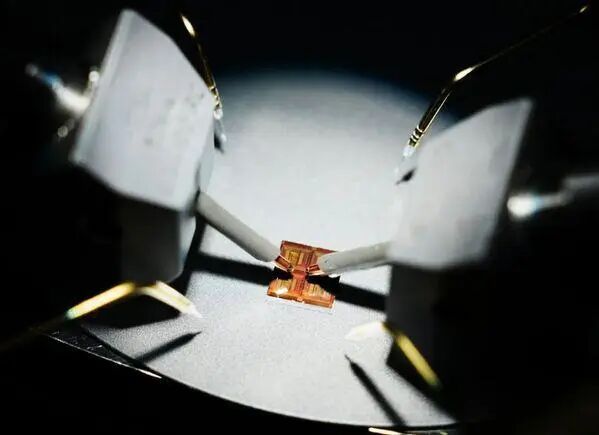
In the era of AI, high-speed storage of big data is crucial. How to break through the speed limits of information storage has always been one of the core foundational issues in the field of integrated circuits and a key technological bottleneck limiting AI computing power. Achieving high-speed storage of big data means that the corresponding memory must perform excellently in storage speed, energy consumption, and capacity, making it a “hexagonal warrior”.
The team led by Zhou Peng and Liu Chunsen at Fudan University’s National Key Laboratory of Integrated Chips and Systems theoretically predicted the super-injection phenomenon by constructing a quasi-two-dimensional Poisson model, breaking the existing theoretical limits of storage speed. Based on this foundational theoretical innovation, the research team recently developed the “Dawn (PoX)” picosecond flash memory device. The “Dawn (PoX)” write speed can be improved to sub-1 nanosecond (400 picoseconds), equivalent to 2.5 billion operations per second, surpassing the world’s fastest volatile memory SRAM technology at the same technology node.
This is currently the fastest semiconductor charge storage technology in the world, achieving comparable storage and computing speeds, and is expected to completely overturn existing memory architectures after large-scale integration. Based on this technology, future personal computers may not have the concept of memory and external storage, eliminating the need for layered storage while enabling local deployment of AI large models.
Original link:
https://www.nature.com/articles/s41586-025-08839-w
3
“Photonics Research” | Tailored Standards, Dual-Frequency Clock Initiation
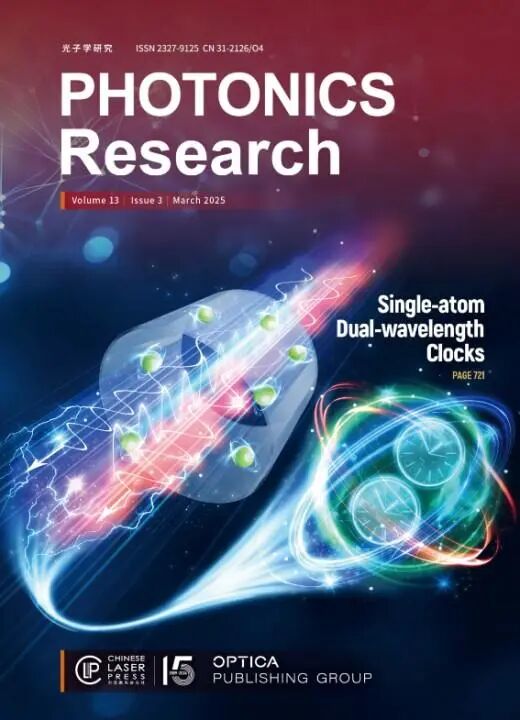
This research was selected as a cover article.
In the field of quantum precision measurement, how to more efficiently develop and utilize quantum ensemble resources to enhance the precision of quantum measurements, especially in enhancing atomic clock functions, optimizing performance, and expanding broader applications, remains a research area full of challenges and opportunities. Professor Chen Jingbiao’s team from Peking University’s School of Electronics has achieved dual-wavelength optical frequency standards in a single-atom ensemble for the first time internationally by utilizing the modulation transfer process between different quantum transitions.
The team established a theoretical model targeting the multi-energy level structure of atoms, deeply analyzing and experimentally realizing the dual optical transition modulation transfer spectrum (DOT-MTS) dual optical clock scheme. This innovation not only verifies the feasibility of synchronously achieving two high-stability optical clocks in a single quantum system but also demonstrates the potential for constructing multiple optical clocks within the same quantum system, providing a new approach for the efficient utilization of quantum resources and laying the technical foundation for multi-clock integration and quantum sensing networks.
Original link:
https://arxiv.org/html/2411.02107v1
4
“Cell” | Discovering a New Mechanism of Bacterial Spatial Selective Infection through Interdisciplinary Research
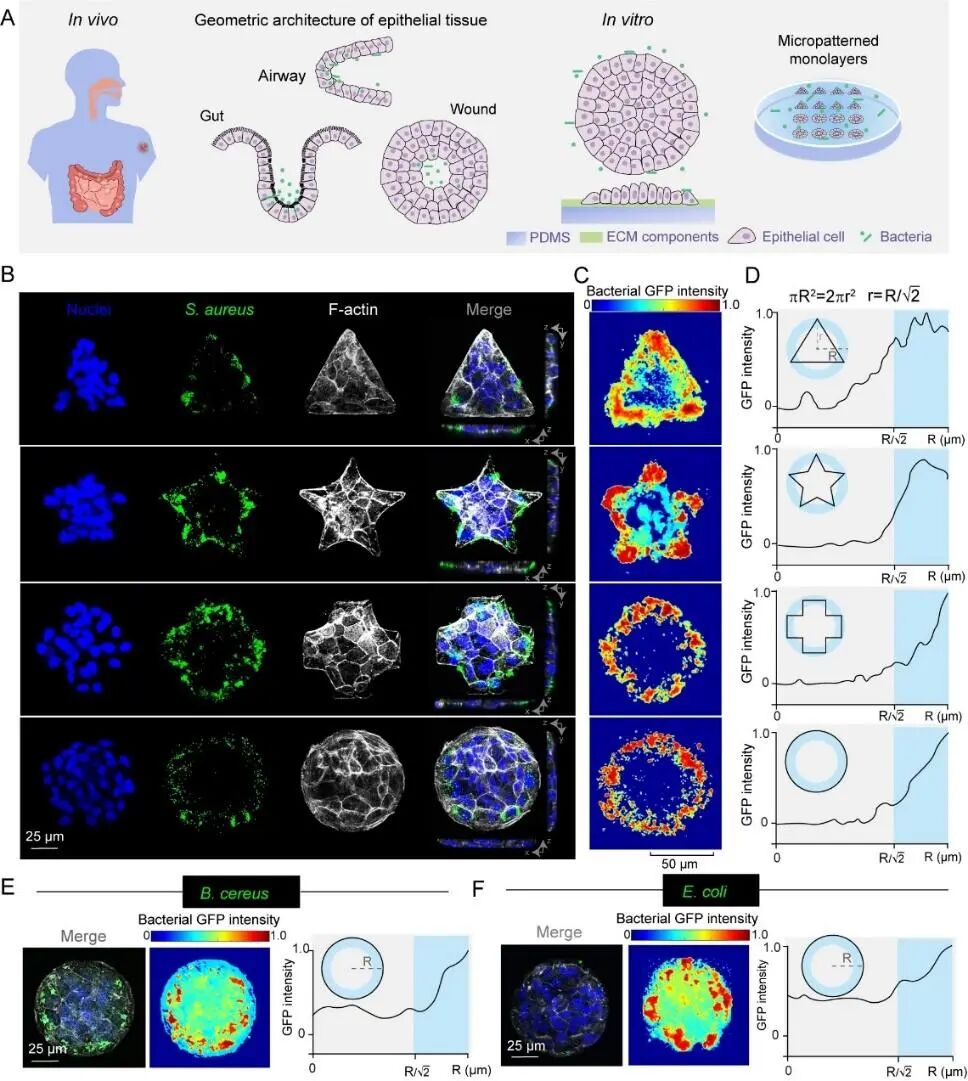
Bacterial selective infection of host cell monolayers.
Bacterial infection is a complex dynamic process involving interactions between bacteria and hosts. Traditional research typically analyzes the mechanisms of bacterial infection from biochemical and cell biology perspectives. In recent years, mechanical factors have been shown to play an equally important role in regulating the functions and behaviors of bacteria and cells alongside biochemical/metabolic factors.
Recently, Professor Zhu Kui’s research group from China Agricultural University, Researcher Huang Shuqing’s group from the Shenzhen Institute of Advanced Technology, Chinese Academy of Sciences, and Professor Huang Jianyong’s group from Peking University’s School of Engineering collaborated to integrate multidisciplinary research methods and technologies related to biomechanics, biophysical biology, cellular molecular biology, microbiology, and biomedical engineering, constructing an experimental platform for bacterial-host cell interactions.
Using a continuous medium mechanics model and cell traction force microscopy technology, they quantitatively elucidated the spatiotemporal regulatory patterns of host geometric and physical mechanical properties on bacterial infection, revealing that the spatial infection patterns of various pathogens in epithelial cell monolayers are not random as traditionally thought, but exhibit significant spatial selective infection, and this infection pattern is related to the density of the tissue cell monolayer, indicating that the geometric structure of the tissue plays an important regulatory role in the spatial distribution of bacterial infection. On this basis, the study further revealed the key regulatory role of the force-sensitive ion channel protein Piezo1 in the interaction process between bacteria and epithelial cell monolayers. During bacterial invasion of host cells, Piezo1 accumulates at the site of bacterial invasion and activates related force signal transduction mechanisms, thereby accelerating bacterial infection in that area. The researchers proposed an antibacterial strategy targeting the force signal transduction pathways related to Piezo1.
This study identified a specific correlation between tissue geometric regulation of cellular traction forces and pathogen-host interactions, revealing the spatiotemporal dynamics of bacterial infection in host tissues (cell monolayers), discovering that pathogens selectively infect cells in host tissues (cell monolayers) with relatively high traction force regions, indicating that pathogen infection exhibits a so-called “marginal effect.” This not only reveals the key regulatory role of biophysical factors in the bacterial infection process but also lays the foundation for developing new host-oriented antibacterial strategies and therapies from a biophysical perspective, with significant clinical application prospects.
Original link:
https://doi.org/10.1016/j.cell.2025.03.042
5
“npj Digital Medicine” | Protecting Maternal and Infant Health, AI Finds Answers from the Fundus

PROMPT prediction model.
As the only living organ that allows direct observation of neurovascular structures, the eye plays a unique “window” role in reflecting overall health. The team led by Professor Lin Haotian from Sun Yat-sen University’s Zhongshan Ophthalmic Center and Professor Wang Zilian from the First Affiliated Hospital has jointly tackled the challenge of non-invasive early prediction of preeclampsia (PE) through fundus vascular characteristics for the first time.
PE, a pregnancy-specific disease, is a leading cause of maternal and perinatal mortality. Existing prediction methods are often invasive and costly, making grassroots promotion difficult. The research team innovatively used early pregnancy fundus vascular changes as a breakthrough, employing AI deep learning algorithms to extract retinal features and combining clinical data to construct the PROMPT prediction model (PE risk factors – ophthalmic data – mean arterial pressure prediction test).
This study first confirmed that fundus vascular characteristics can serve as a new biomarker for PE prediction, with the PROMPT model achieving an AUC of 0.87 (0.83-0.90) for predicting PE and 0.91 (0.85-0.97) for predicting early-onset PE, significantly outperforming baseline models (p<0.001). This technology can increase the detection rate of severe adverse pregnancy outcomes to 41%. The PROMPT model has advantages of being non-invasive, convenient, and cost-effective, making it suitable for promotion in grassroots medical institutions, providing a basis for maternal and infant health decision-making in low- and middle-income countries, and is of great significance for optimizing the prevention and control of pregnancy-related diseases.
Original link:
https://www.nature.com/articles/s41746-025-01582-6
6
“ASCE Journal of Engineering Mechanics” | Solving the Challenges of Operational Modal Analysis for Large Structures, Monitoring One Step Ahead
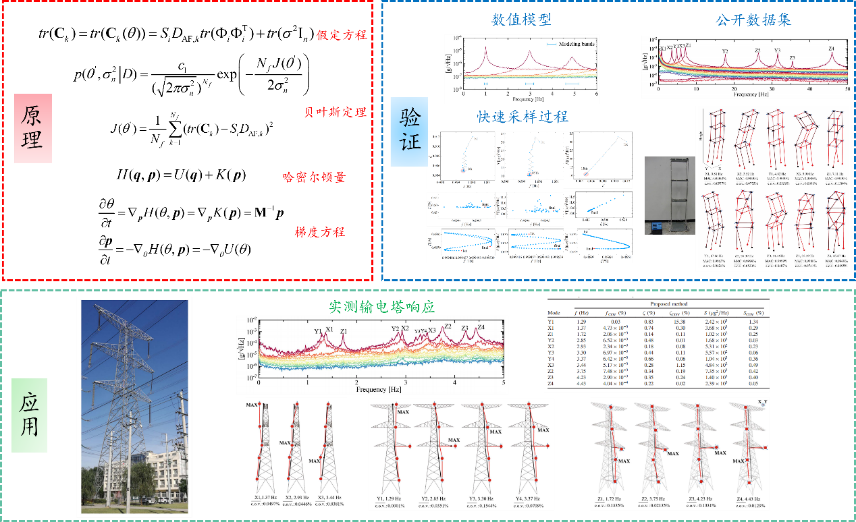
Fast Bayesian Hamiltonian Monte Carlo sampling method.
Operational modal analysis is a core technology for structural health monitoring, capable of revealing the essential changes in structural dynamic characteristics in a non-destructive and real-time manner, providing scientific basis for damage warning, performance evaluation, and lifecycle management. One of the cutting-edge issues in operational modal analysis for large structures is how to reasonably construct a sampling framework to achieve rapid and accurate sampling of posterior distributions.
In response to this, Professor Sun Qing’s team from Xi’an Jiaotong University proposed a sampling method called fast Bayesian Hamiltonian Monte Carlo. This method first constructs a Hamiltonian conservative phase space, naturally decomposing the frequency domain modal space from the perspective of frequency domain power spectral density traces and constructing the posterior probability density function. By optimizing it using Laplace asymptotic approximation methods and embedding it in Hamiltonian form, this method defines a multidimensional mass matrix in the kinetic energy function in parameter gradient form, combined with the use of random momentum, transforming the parameter identification process into a rapid sampling problem along the gradient direction of parameters in phase space.
Compared to traditional sampling methods, the fast Bayesian Hamiltonian Monte Carlo method can alleviate random walk behavior in probability space by generating samples that conform to the target distribution, significantly improving the efficiency of sampling and uncertainty assessment in operational modal analysis under high-dimensional parameter backgrounds.
Original link:
https://doi.org/10.1061/JENMDT.EMENG-8138

For more cutting-edge technology developments,
you might want to follow
the International Science and Technology Innovation Center’s network service platform
(www.ncsti.gov.cn)
Science and Technology Innovation Hot List
Scan the QR code
for quick access
to the International Science and Technology Innovation Center’s network service platform

Supplementary Reading:
About the “Science and Technology Innovation Hot List – Cutting-Edge Technology”
The International Science and Technology Innovation Center’s network service platform (www.ncsti.gov.cn) publishes research results from nearly 200 research institutions and units, including the Chinese Academy of Sciences, the Academy of Engineering, the Academy of Medical Sciences, the Academy of Agricultural Sciences, 985 universities, and new R&D institutions. It dynamically extracts multi-source data and forms recommended lists based on multidimensional weights such as field dimensions, journal levels, innovation carriers, scholar information, and time gradients, analyzed by artificial intelligence, and updated daily.
Previous Recommendations

Yin Li conducted in-depth research in medical institutions, calling for the promotion of collaborative development and governance of the “three medicals” to achieve new breakthroughs, allowing the public to receive more convenient and better medical services.
The Political Bureau of the Central Committee held a meeting to analyze and study the current economic situation and economic work.
Face-to-face interpretation, 16 policy measures “set sail to assist enterprises”.
Welcome to apply, the second batch of reserve projects for fixed asset investment in the science and technology service industry for 2025 is now open for collection—
